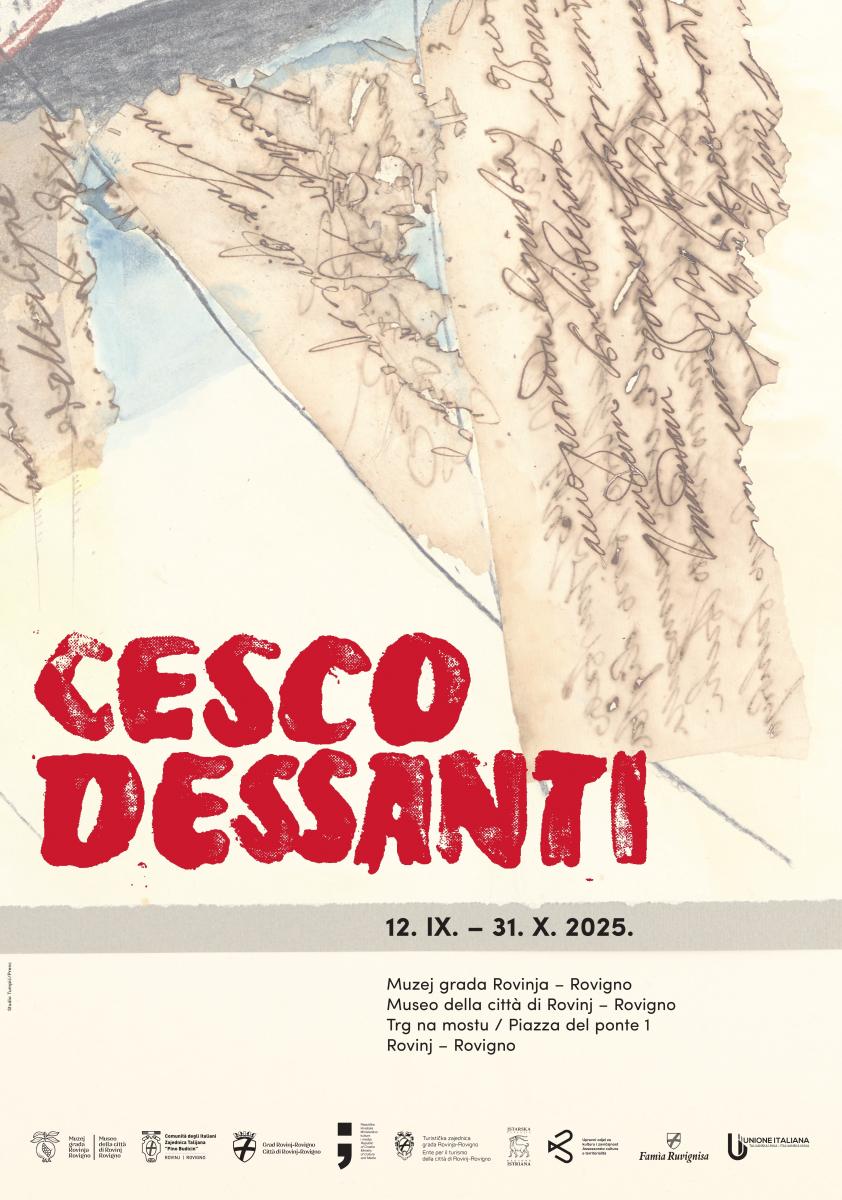Cesco Dessanti: The Man, the Painter, and the Poet
Exhibition of the Rovinj Artist
Cesco Dessanti (1926–2015) was the first artist from Rovinj—and from the Istrian region—who studied at the Academy of Fine Arts in Zagreb, under professors Marijan Detoni, Jerolim Miše, and Marino Tartaglia. Dessanti was one of the key figures who revitalized the art scene in post-war Rovinj, which had been left deserted after the exodus. In 1952, he himself left his hometown, moving first to Chiari and then to Rome, where he lived until his death. In addition to painting, he worked as a technical and artistic draftsman in the Conservation Department for Archaeology, Fine Arts, and Landscape Heritage of the Lazio region.
The selection of works on display showcases Cesco's passion for paper as a medium, as well as the human figure—two constants throughout his creative output. He produced a wide range of sensual female nudes, often placing them in dialogue with male figures. He took special joy in uniting his figures under the theme of motherhood, a subject he returned to again and again. Through the figure as the central element, he also explored darker themes such as violence, suffering, and torture, eventually delving into mythology and sacred topics. The ancient motif of the bucranium (ox skull) appears frequently in his drawings and paintings—a reflection of the Roman environment in which he lived and worked.
In his later works (1980s), Cesco moved toward larger formats, mounting toned paper onto a base, and the human figure became abstracted or even reduced into partially recognizable forms capable of evoking multiple meanings. Dessanti was deeply marked by the Mediterranean. From it, he drew powerful emotions—light and tension, heightened sensuality, but also contemplation. His primary artistic direction was Expressionism, a tool for capturing a deep, ancient melancholy infused with sorrow, which weighed heavily and naturally led him to depict the essential moments of human existence as recurring themes.
Alongside the overview of his painting, the exhibition also presents Cesco’s poetry collection Così nel tempo (1985). In fact, besides painting, he nurtured a great love for poetry. With this exhibition, we aim to present Dessanti not only as a painter and poet but also to highlight his significance as a great humanist—an artist who constantly questioned and deeply reflected on both his art and life itself.
The exhibition’s author and curator is Elizabeta Rogović. The catalog design is by Studio Tumpić/Prenc, and the exhibition is co-organized by the Italian Community "Pino Budicin" of Rovinj. Exhibition photography by Dalibor Talajić.
Free admission.

